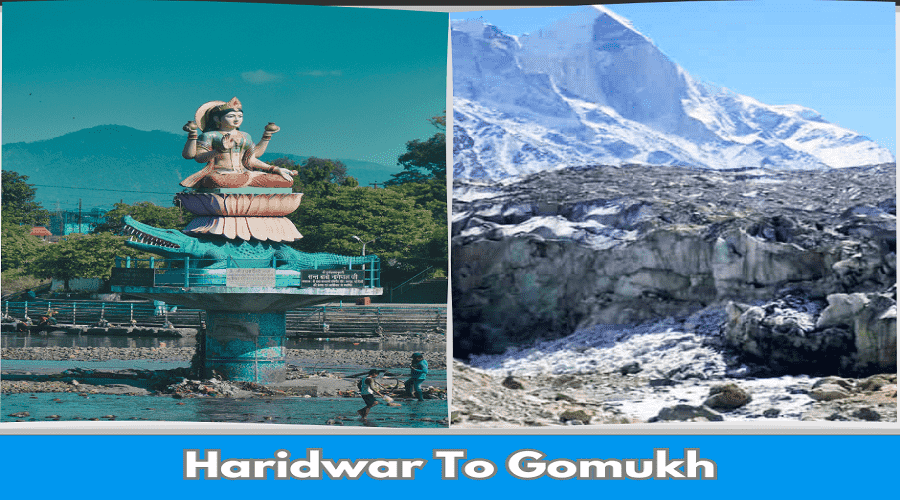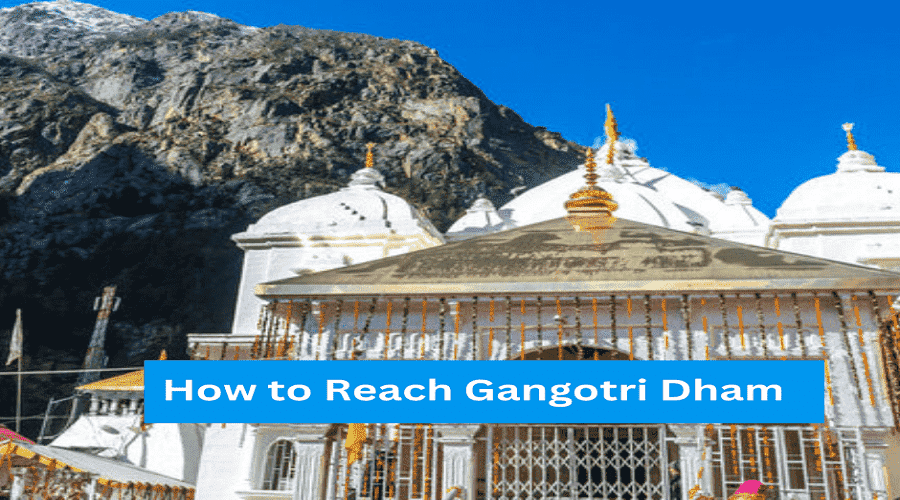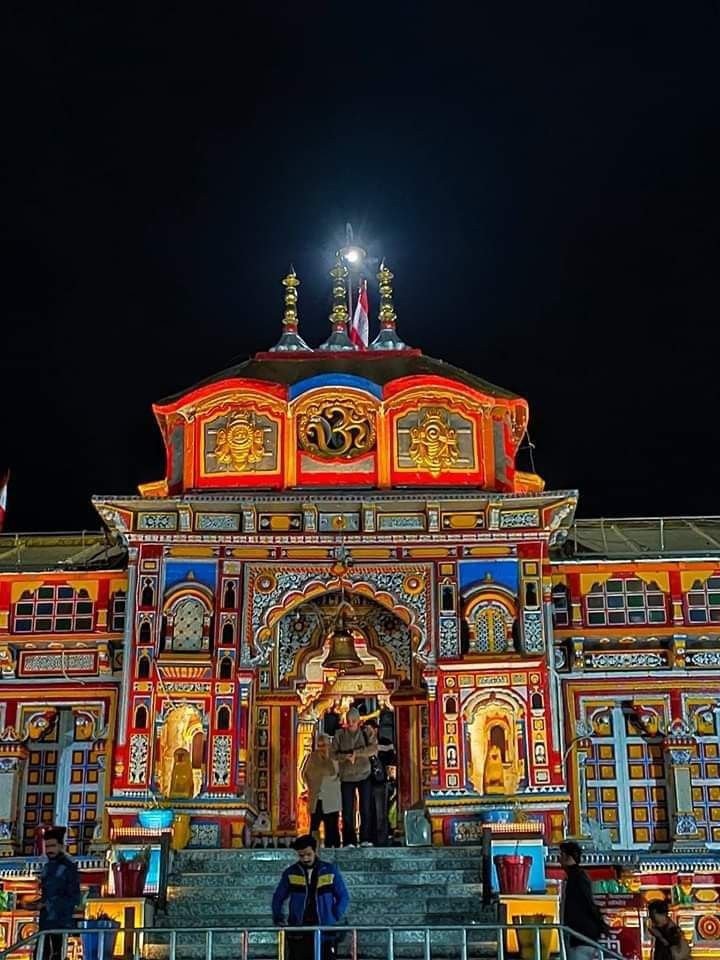Table of Contents
Toggle



How to reach Haridwar to Gomukh by road
Here’s a detailed road map for how to reach Haridwar to Gomukh
1. Haridwar to Rishikesh
Start your journey from Haridwar and head towards Rishikesh. The distance between Haridwar and Rishikesh is around 20 kilometers. You can take NH34 or the Rishikesh-Badrinath Highway to reach Rishikesh.
2. Rishikesh to Uttarkashi
From Rishikesh, travel towards Uttarkashi, which is approximately 180 kilometers away. Take NH34 and continue on the Rishikesh-Badrinath Highway. The journey will take you through beautiful landscapes and towns like Chamba and Tehri.
3. Uttarkashi to Gangotri
Next, proceed from Uttarkashi to Gangotri, which is about 100 kilometers away. You’ll continue on NH34 and then take the Gangotri Highway to reach Gangotri, offering views of the Bhagirathi River and surrounding mountains.
4. Gangotri to Gomukh (Trek)
The final step of the journey involves trekking from Gangotri to Gomukh. The trek is around 18 kilometers long and takes you along the Bhagirathi River. It’s a moderate trek that usually takes 6-8 hours, depending on your pace and the weather conditions.
Distance between Gomukh to various cities
1. Haridwar to Gomukh distance
The distance from Haridwar to Gomukh is approximately 300 kilometers by road. This distance includes the journey from Haridwar to Gangotri by road and then the trek from Gangotri to Gomukh, which is about 18 kilometers (11 miles) one way.
2. Gomukh to Kedarnath distance
The distance from Gomukh to Kedarnath is approximately 68 kilometers by trekking route. This trek involves crossing over the Gangotri Glacier, crossing the Gaumukh Tapovan, and then descending to Gangnani, where you can take a bus or taxi to Sonprayag. From Sonprayag, it’s another 20 kilometers by road to reach Gaurikund, the base for the trek to Kedarnath. The entire journey can take several days, depending on your pace and the weather conditions.
3. Delhi to Gomukh distance
The distance from Delhi to Gomukh is approximately 480 kilometers by road. The route typically involves traveling from Delhi to Haridwar, then to Rishikesh, Uttarkashi, Gangotri, and finally trekking from Gangotri to Gomukh. The journey by road can take around 12-14 hours, depending on the traffic and road conditions.
About Gomukh Glacier
Gomukh is the last point of the Gangotri Glacier, one of the primary sources of the Ganges River. Located in Uttarakhand, India, Gomukh is situated at an elevation of about 4,463 meters (14,640 feet) in the Garhwal Himalayas. The glacier is approximately 30 kilometers long and 2 to 4 kilometers wide.
The name “Gomukh” translates to “cow’s mouth” in Hindi, named so because the glacier’s resembles a cow’s mouth. Gomukh is not only a geographical landmark but also a sacred place for Hindus, as it is believed to be the source of the Ganges River, which is considered holy in Hinduism.
The journey to Gomukh is a popular pilgrimage and trekking route, attracting adventurers, spiritual seekers, and nature enthusiasts. The trek from Gangotri to Gomukh offers stunning views of the Himalayan peaks, including Shivling, Meru, and Bhagirathi sisters, along with the opportunity to witness the majestic Gangotri Glacier up close.
Mysterious thing of Gomukh Glacier
There are several aspects of Gomukh that have intrigued people over the years, contributing to its mystique.
1. Source of the Ganges
Gomukh is believed to be the source of the Ganges River, which holds immense spiritual significance in Hinduism. The idea that a glacier, which appears static and timeless, is the origin of a mighty and constantly flowing river adds to the mystique.
2. Changing Glacier
Like all glaciers, the Gangotri Glacier is constantly moving and changing. This dynamic nature, coupled with the belief in the river’s divine origin, creates a sense of awe and mystery around Gomukh.
3. Remote Location
Gomukh is situated in a remote and rugged region of the Himalayas, accessible only by a challenging trek. The isolation and pristine beauty of the area add to its mystical appeal.
4. Spiritual Significance
The entire region around Gomukh is steeped in Hindu mythology and spirituality. The journey to Gomukh is not just a physical trek but also a spiritual pilgrimage for many, adding to the mystery and allure of the place.
5. Natural Beauty
Apart from its spiritual and cultural significance, Gomukh is also renowned for its breathtaking natural beauty. The towering Himalayan peaks, the vast expanse of the glacier, and the pristine surroundings create an atmosphere of mystery and wonder.
Best month to visit Gomukh & to do Treking
The best time to visit Gomukh is during the summer months, from May to June, and then again in the post-monsoon months of September and October. During these periods, the weather is relatively stable, with clear skies and pleasant temperatures, making it ideal for trekking and exploring the region.
However, it’s important to note that Gomukh is located at a high altitude, so even during the summer months, temperatures can be quite cold, especially at night. Additionally, the weather in the mountains can be unpredictable, so it’s advisable to be prepared for sudden changes in weather conditions.
The monsoon season, from July to August, is not recommended for visiting Gomukh, as the region receives heavy rainfall, which can lead to landslides and difficult trekking conditions. Overall, the best months to visit Gomukh are May, June, September, and October, when the weather is most favorable for trekking and exploring the area.
Difficulty level of Gomukh Trek
The Gomukh trek is considered to be moderately difficult. It’s a challenging trek that requires a good level of fitness and stamina, as well as proper acclimatization to the high altitude. Here are some key points to consider regarding the difficulty level of the Gomukh trek
1. Time Duration
The trek from Gangotri to Gomukh is approximately 18 kilometers one way, making it a total of 36 kilometers round trip. Depending on your pace and the weather conditions, it can take anywhere from 2 to 3 days to complete the trek.
2. Altitude
Gomukh is located at an altitude of about 4,463 meters (14,640 feet), and the trek involves a gradual ascent from Gangotri. Altitude sickness can be a concern, so it’s important to acclimatize properly and be aware of the symptoms.
3. Terrain
The terrain on the Gomukh trek is rugged and uneven, with sections of rocky paths, boulder-strewn trails, and steep ascents. Some parts of the trail can be narrow and exposed, requiring careful footing.
4. Weather
The weather in the Himalayas can be unpredictable, with conditions changing rapidly. It’s important to be prepared for cold temperatures, high winds, and the possibility of rain or snow, especially during the shoulder seasons.
5. Physical Fitness
Due to the altitude and challenging terrain, a good level of physical fitness is required to undertake the Gomukh trek. Regular cardio and endurance training prior to the trek can help prepare your body for the demands of the trek.
Overall, while the Gomukh trek is challenging, it is also incredibly rewarding, offering stunning views of the Himalayas and the opportunity to witness the source of the Ganges River. With proper preparation and a positive attitude, most trekkers with moderate fitness levels should be able to complete the trek successfully.
Weather of Gomukh in different months
The weather at Gomukh can vary significantly depending on the season. Here’s a general overview of the weather you can expect at different times of the year.
1. Summer (May to June)
Summer is the best time to visit Gomukh, as the weather is relatively mild and pleasant. Daytime temperatures range from 10°C to 15°C (50°F to 59°F), while nighttime temperatures can drop to 0°C to 5°C (32°F to 41°F). The weather is generally clear, making it ideal for trekking and outdoor activities.
2. Monsoon (July to August)
The monsoon season brings heavy rainfall to the region, making trekking difficult and dangerous due to the risk of landslides and slippery trails. It’s not recommended to visit Gomukh during this time.
3. Post-Monsoon (September to October)
After the monsoon season, the weather begins to clear up, and the skies become clearer. Daytime temperatures range from 5°C to 10°C (41°F to 50°F), while nighttime temperatures can drop to -5°C to 0°C (23°F to 32°F). This is another good time to visit Gomukh, as the weather is cool and pleasant.
4. Winter (November to April)
Winter is extremely cold at Gomukh, with temperatures dropping below freezing. Daytime temperatures range from -5°C to 0°C (23°F to 32°F), while nighttime temperatures can drop to -15°C to -10°C (5°F to 14°F). The area is usually covered in snow during this time, making trekking very challenging.
It’s important to note that weather conditions in the mountains can be unpredictable, and temperatures can vary widely from day to day. It’s advisable to check the weather forecast before planning your trip and to be prepared for sudden changes in weather conditions.
Wether a guide is mandatory for Gaumukh Trek
While a guide is not mandatory for the Gaumukh Trek, especially for experienced trekkers, it is highly recommended, especially for those who are new to trekking or unfamiliar with the terrain. Here are a few reasons why having a guide can be beneficial
1. Safety
The terrain in the Himalayas can be challenging, with steep ascents, rocky paths, and unpredictable weather. A guide can help ensure your safety by navigating difficult sections of the trail and providing assistance in case of emergencies.
2. Local Knowledge
Guides are familiar with the local area, including the best routes, water sources, and places to camp. They can also provide valuable information about the flora, fauna, and culture of the region, enhancing your overall trekking experience.
3. Logistical Support
Guides can help arrange transportation, accommodation, and permits, making your trekking experience smoother and more enjoyable.
4. Environmental Conservation
Guides are often knowledgeable about the importance of preserving the environment and can help ensure that you leave minimal impact on the fragile ecosystem of the Himalayas.
Overall, while a guide is not mandatory for the Gaumukh Trek, having one can enhance your experience and ensure that your trek is safe and enjoyable.
Peaks visible during Gomukh Trek
Several prominent peaks surround the Gomukh area, offering a breathtaking backdrop to the region. Some of the notable peaks near Gomukh include are.
1. Shivling Peak
Shivling is one of the most iconic peaks visible from Gomukh. It stands at an elevation of about 6,543 meters (21,467 feet) and is renowned for its stunning pyramid shape.
2. Meru Peak
Meru Peak is another prominent peak visible from Gomukh. It stands at an elevation of about 6,310 meters (20,700 feet) and is known for its challenging climbing routes.
3. Bhagirathi Peaks
The Bhagirathi Peaks are a group of three peaks (Bhagirathi I, II, and III) that are visible from Gomukh. Bhagirathi is the highest among them, standing at an elevation of about 6,856 meters (22,493 feet).
4. Thalay Sagar
Thalay Sagar is a majestic peak located near Gomukh, standing at an elevation of about 6,904 meters (22,651 feet). It is known for its steep and challenging climbing routes.
5. Kedar Dome
Kedar Dome is another prominent peak near Gomukh, standing at an elevation of about 6,831 meters (22,411 feet). It is known for its stunning glacier-covered slopes.











